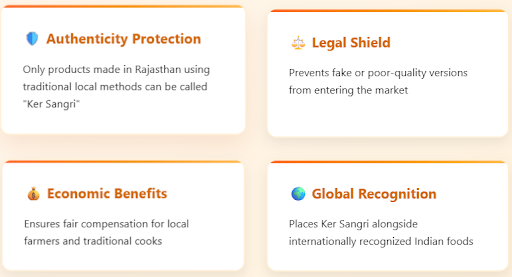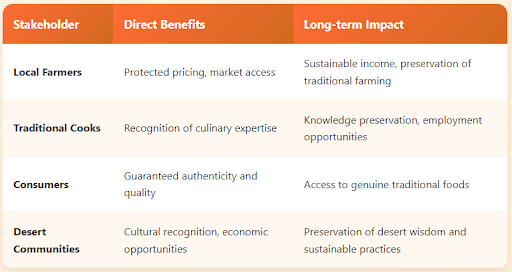



Ker Sangri, a tangy Rajasthani delicacy from Ker berries and Sangri beans, earned a GI tag, ensuring authenticity and boosting local pride. This protein-rich dish, packed with minerals and phytochemicals, supports farmers’ incomes, preserves culinary heritage, and opens global markets, fostering economic growth and cultural recognition for Rajasthan’s desert communities

Copyright infringement not intended
Picture Courtesy: HINDUSTAN TIMES
Ker Sangri, a traditional Rajasthani delicacy, has recently received the Geographical Indication (GI) tag.
Ker Sangri is a traditional dish from Rajasthan.
It combines two unique ingredients: Ker, a small, sour berry from the Capparis decidua plant, and Sangri, a bean-like pod from the Khejri tree (Prosopis cineraria).

Ker Sangri earned the Geographical Indication (GI) tag, a certification that links a product to a specific region, recognizing its unique qualities tied to that place. This protects the product identity, prevents fake or low-quality versions, and supports local farmers and artisans.
|
GI Tag Governed by the Geographical Indications of Goods (Registration and Protection) Act, 1999, which came into effect from September 15, 2003, following India's WTO membership and TRIPS Agreement obligations. |
Ker Berry
Source: Small desert shrub native to Thar Desert
Characteristics: Bitter when raw, transforms after proper processing
Harvesting: Hand-picked before animals can reach
Sangri Bean
Source: Pods from the sacred Khejri tree (Prosopis cineraria)
Cultural Value: Protected by Bishnoi community for centuries
Traditional Preparation Method
According to the Arid Forest Research Institute, Jodhpur, Sangri contains 53% protein content, making it one of the most protein-rich plant foods available.
Essential Minerals
Phytochemicals


Must Read Articles:
Source:
|
PRACTICE QUESTION Q. Despite India’s rich cultural heritage, many GI-tagged products struggle in the market. Analyze the reasons behind this anomaly. 150 words |









© 2026 iasgyan. All right reserved